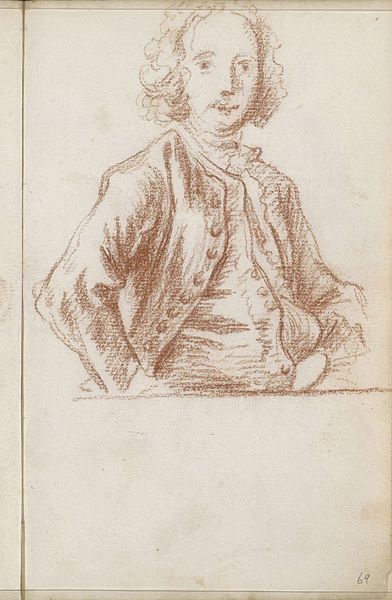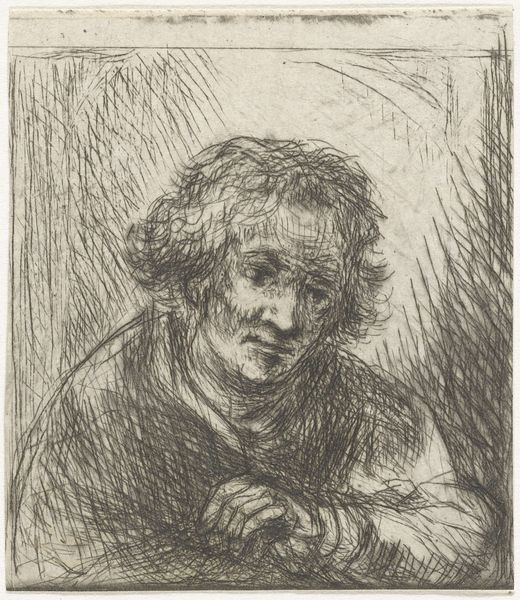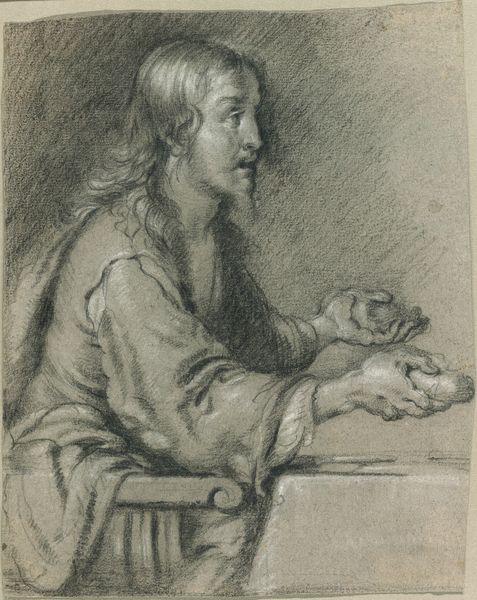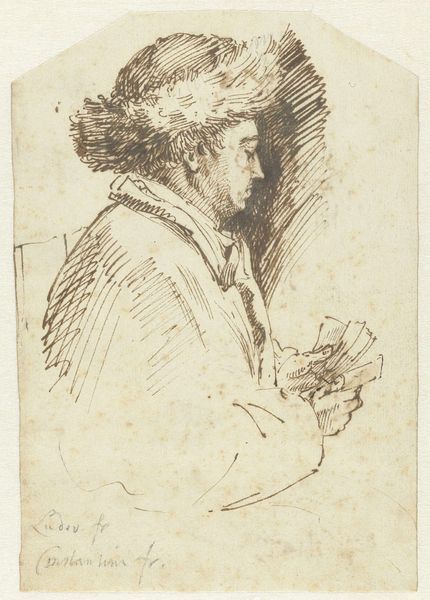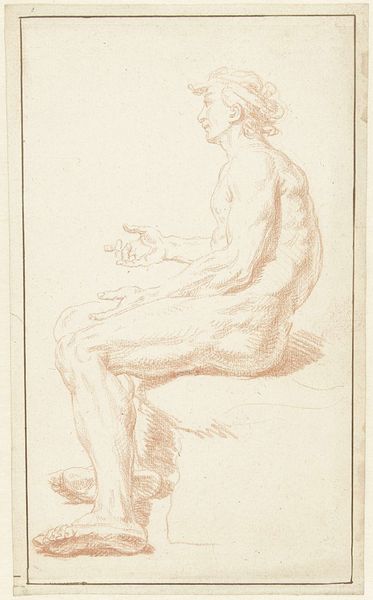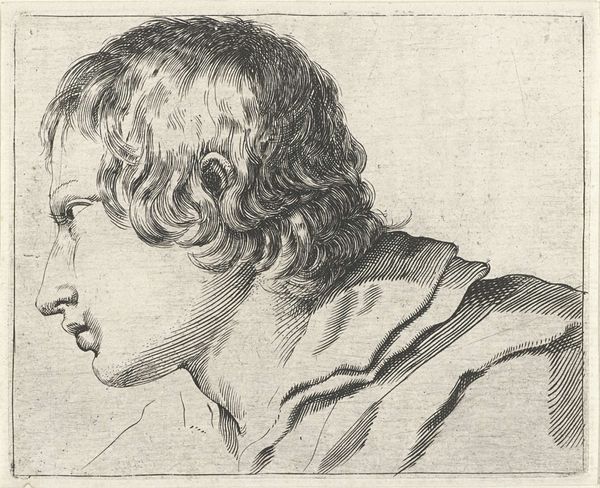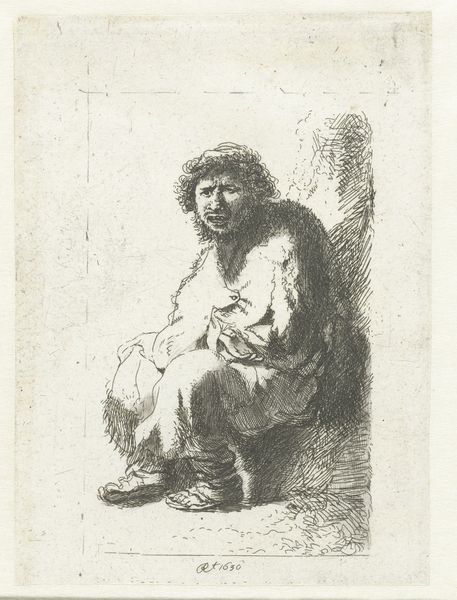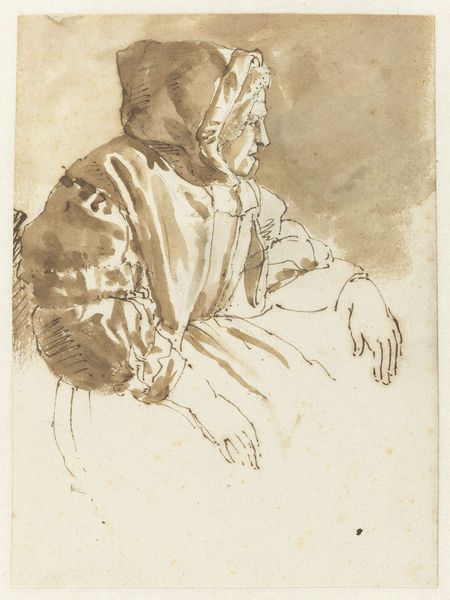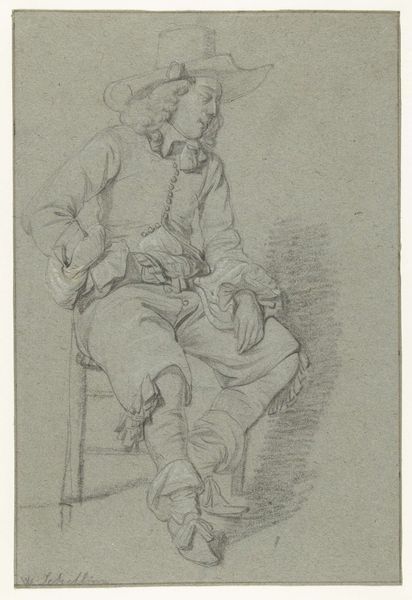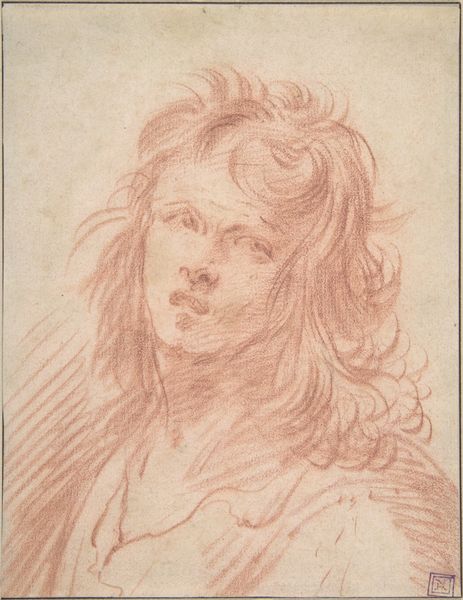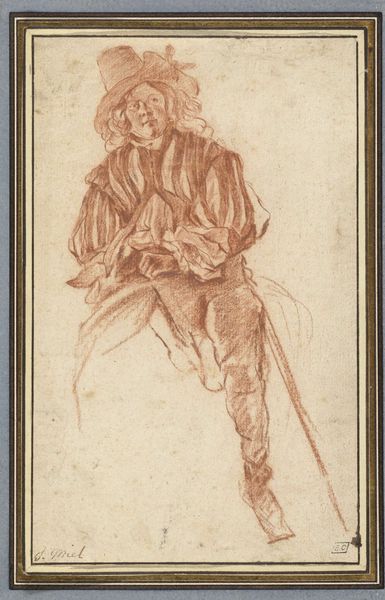
drawing, paper, pencil
#
portrait
#
drawing
#
neoclacissism
#
figuration
#
paper
#
pencil drawing
#
pencil
#
line
#
portrait drawing
#
academic-art
Copyright: Public Domain: Artvee
Curator: This pencil drawing, "Hope," dates back to around 1765 and is attributed to Angelica Kauffmann. What strikes you first about it? Editor: The contemplative mood. He's caught in a moment of profound thought, isn't he? Melancholy, even, despite the title suggesting otherwise. Curator: Absolutely. Notice how Kauffmann uses line to build up form. It is an academic study in rendering drapery, but the motif is also powerful. The way he rests his chin on his hand-- a very established symbol for introspection. It can denote deep thought, perhaps a pondering of the future that the title suggests is tinged with some anxiety. Editor: Hope is a complicated concept, right? Here, hope seems less like joyful anticipation and more like…a fragile wish, balanced precariously against disappointment. This was pre-revolution in France, after all; hope must have been very strained for so many at the time. I can't help but situate this image within those anxieties. Curator: Yes! This image captures that beautifully. It uses the visual language of neoclassical art to invoke virtues but gives us an honest portrait of interiority. Kauffman often used this formal vocabulary. This specific image reminds me of similar representations in classical sculpture—the pose, the drapery. She's tapping into that lineage, but perhaps subtly subverting the heroic tone. Editor: It certainly resonates beyond a simple portrait. Is he waiting? Yearning? The softness in his eyes suggests a deep vulnerability, almost at odds with the stoic tradition that Neoclassicism is rooted in. The title “Hope” seems less an affirmation, and more of an anxious question here. A very interesting moment of tension to examine through a gendered and social lens, especially considering Kauffman’s status as one of few women in academic circles. Curator: I agree entirely. The blending of styles and motifs, with that tension between outward presentation and inner emotion, makes it a complex and rather compelling work. Editor: Absolutely, it is a powerful reminder that even seemingly simple sketches can hold layers of meaning, especially when we consider the socio-political contexts surrounding the work.
Comments
No comments
Be the first to comment and join the conversation on the ultimate creative platform.
